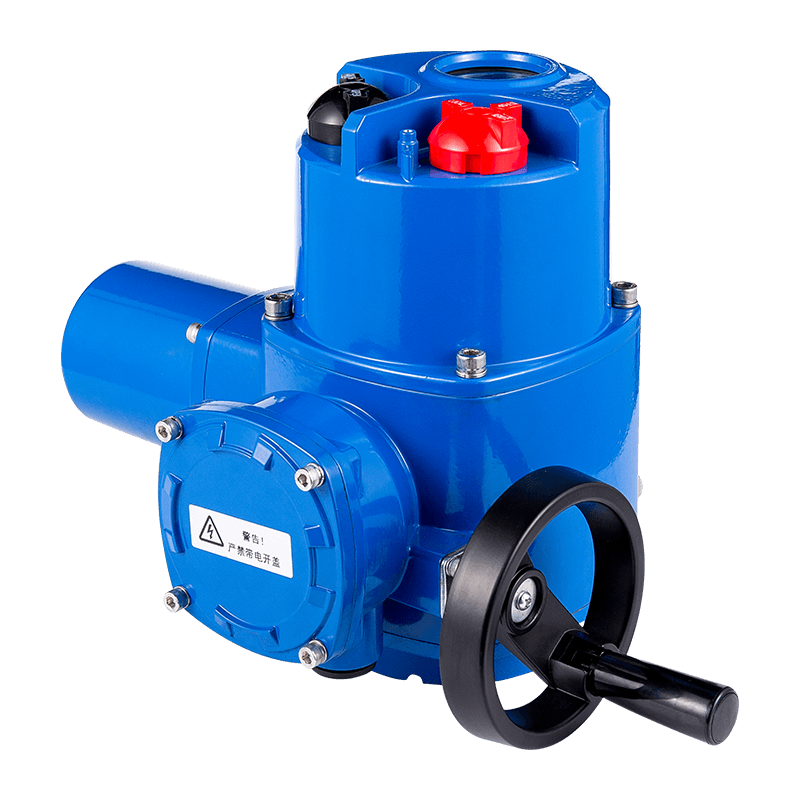0086 15335008985
Cat:Multi Turn Electric Actuator
The AUKEMA rotary intelligent electric actuator has two control types: AK intelligent switch type and AKM intelligent ad...
See Details
In modern industrial automation systems, the control accuracy of quarter turn electric actuators directly affects the stability and efficiency of the entire process. Traditional actuators rely on preset parameters and fixed control logic. Although they can meet basic needs, they may still have problems such as response lag, overshoot or oscillation under complex working conditions. With the development of intelligent control technology, the new generation of angular-stroke electric actuators has broken through the limitations of passive response. Through the integration of adaptive algorithms and predictive control technology, a higher level of autonomous decision-making capabilities has been achieved, bringing valve positioning accuracy to a new level.
The core of the adaptive control algorithm lies in dynamic adjustment. The PID parameters of traditional actuators are usually static, and once set, it is difficult to adapt to load changes or external disturbances. The built-in microprocessor of modern intelligent actuators can monitor the operating status in real time, such as key parameters such as torque, speed, and temperature, and automatically correct the control parameters based on model reference or direct optimization strategy. For example, when the actuator drives a high-inertia load, the algorithm will identify the change in torque demand during the acceleration phase and dynamically adjust the proportional gain and integral time to avoid overshoot due to too fast response or affect the adjustment speed due to too slow response. This self-optimization capability enables the actuator to always maintain optimal performance in the face of different working conditions without human intervention.
The introduction of predictive control technology further improves the actuator's forward-looking nature. Unlike traditional feedback control, predictive control is based on the system model and current state to deduce the behavior trend in the future and calculate the optimal control sequence in advance. For angular stroke electric actuators, this means that it can predict the motion inertia and load fluctuations of the valve, adjust the output torque and speed curve in advance, and significantly reduce oscillation and overshoot during positioning. For example, when closing a large-diameter valve quickly, the actuator will decelerate in advance based on historical data and real-time feedback to avoid mechanical shock, while ensuring that the action is completed within the specified time. This predictive ability not only improves positioning accuracy, but also extends the service life of mechanical components.
Another key advancement of smart actuators is the embedding of learning capabilities. Through machine learning algorithms, actuators can accumulate historical operating data, identify repetitive working conditions, and gradually optimize control strategies. For example, in a periodically adjusted process, the actuator will record the response characteristics of each action, automatically correct the model error, and continuously improve the accuracy of subsequent control. This self-improving intelligent system reduces the reliance on manual parameter adjustment, and is particularly suitable for scenarios with long-term operation and slowly changing working conditions.
In addition, the control logic of modern quarter turn electric actuators also focuses on fault prediction and fault tolerance. By analyzing subtle changes in motor current, vibration signals, etc., intelligent algorithms can identify potential mechanical wear or electrical anomalies early, and adopt load reduction or smooth switching strategies to avoid sudden failures. This proactive maintenance mechanism reduces the risk of unplanned downtime and improves the overall reliability of the system.
However, the application of intelligent control technology also brings new challenges. The complexity of the algorithm requires the actuator to have stronger computing power and ensure real-time performance, which puts higher requirements on hardware design. In addition, adaptive and predictive control depends on accurate system modeling. If the model deviation is large, it may affect the control effect. Therefore, modern intelligent actuators usually adopt a hierarchical optimization strategy to gradually improve the adaptability of advanced algorithms while ensuring the stability of core control.
From the development trend, the control logic of quarter turn electric actuators is evolving towards a more autonomous and collaborative direction. In the future, with the in-depth application of edge computing and industrial Internet of Things, actuators will not only be able to optimize their own performance, but also share data with upstream and downstream equipment to achieve global collaborative control. This system-level intelligence will further break through the limitations of single-machine optimization and promote industrial automation to develop in a more efficient and reliable direction.